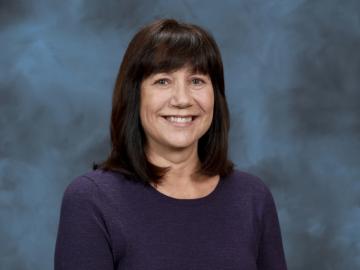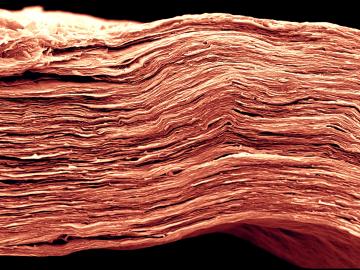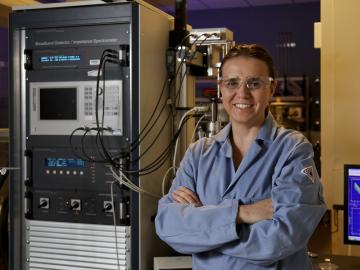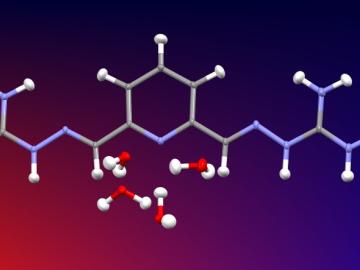
Filter News
Area of Research
- (-) Materials (95)
- (-) Supercomputing (118)
- Advanced Manufacturing (3)
- Biology and Environment (124)
- Biology and Soft Matter (1)
- Building Technologies (1)
- Computational Biology (1)
- Computational Engineering (3)
- Computer Science (16)
- Electricity and Smart Grid (1)
- Energy Science (156)
- Energy Sciences (1)
- Functional Materials for Energy (2)
- Fusion and Fission (8)
- Fusion Energy (2)
- Isotope Development and Production (1)
- Isotopes (28)
- Materials for Computing (15)
- Mathematics (1)
- National Security (46)
- Neutron Science (33)
- Nuclear Science and Technology (15)
- Quantum information Science (8)
- Sensors and Controls (1)
News Topics
- (-) Biotechnology (2)
- (-) Clean Water (3)
- (-) Computer Science (99)
- (-) Cybersecurity (8)
- (-) Energy Storage (37)
- (-) Environment (35)
- (-) Isotopes (14)
- (-) Machine Learning (15)
- (-) Microscopy (29)
- (-) Security (7)
- (-) Space Exploration (5)
- 3-D Printing/Advanced Manufacturing (26)
- Advanced Reactors (5)
- Artificial Intelligence (39)
- Big Data (22)
- Bioenergy (18)
- Biology (14)
- Biomedical (22)
- Buildings (8)
- Chemical Sciences (32)
- Composites (9)
- Coronavirus (17)
- Critical Materials (15)
- Exascale Computing (26)
- Frontier (32)
- Fusion (8)
- Grid (9)
- High-Performance Computing (45)
- Irradiation (1)
- ITER (1)
- Materials (79)
- Materials Science (83)
- Mathematics (2)
- Molten Salt (3)
- Nanotechnology (42)
- National Security (8)
- Neutron Science (42)
- Nuclear Energy (20)
- Partnerships (11)
- Physics (34)
- Polymers (18)
- Quantum Computing (21)
- Quantum Science (33)
- Simulation (16)
- Software (1)
- Summit (43)
- Transportation (19)
Media Contacts

Using artificial neural networks designed to emulate the inner workings of the human brain, deep-learning algorithms deftly peruse and analyze large quantities of data. Applying this technique to science problems can help unearth historically elusive solutions.

OAK RIDGE, Tenn., March 22, 2019 – Karren Leslie More, a researcher at the Department of Energy’s Oak Ridge National Laboratory, has been elected fellow of the Microscopy Society of America (MSA) professional organization.

The unique process of accepting a new supercomputer is one of the most challenging projects a programmer may take on during a career. When the Oak Ridge Leadership Computing Facility’s (OLCF’s) Verónica Melesse Vergara came to the United States from Ecuador in 2005, she never would have dreamed of being part of such an endeavor. But just last fall, she was.


OAK RIDGE, Tenn., March 4, 2019—A team of researchers from the Department of Energy’s Oak Ridge National Laboratory Health Data Sciences Institute have harnessed the power of artificial intelligence to better match cancer patients with clinical trials.

OAK RIDGE, Tenn., March 1, 2019—ReactWell, LLC, has licensed a novel waste-to-fuel technology from the Department of Energy’s Oak Ridge National Laboratory to improve energy conversion methods for cleaner, more efficient oil and gas, chemical and

Vera Bocharova at the Department of Energy’s Oak Ridge National Laboratory investigates the structure and dynamics of soft materials.

Researchers used neutron scattering at Oak Ridge National Laboratory’s Spallation Neutron Source to investigate the effectiveness of a novel crystallization method to capture carbon dioxide directly from the air.

Oak Ridge National Laboratory scientists have created open source software that scales up analysis of motor designs to run on the fastest computers available, including those accessible to outside users at the Oak Ridge Leadership Computing Facility.
OAK RIDGE, Tenn., Feb. 12, 2019—A team of researchers from the Department of Energy’s Oak Ridge and Los Alamos National Laboratories has partnered with EPB, a Chattanooga utility and telecommunications company, to demonstrate the effectiveness of metro-scale quantum key distribution (QKD).


